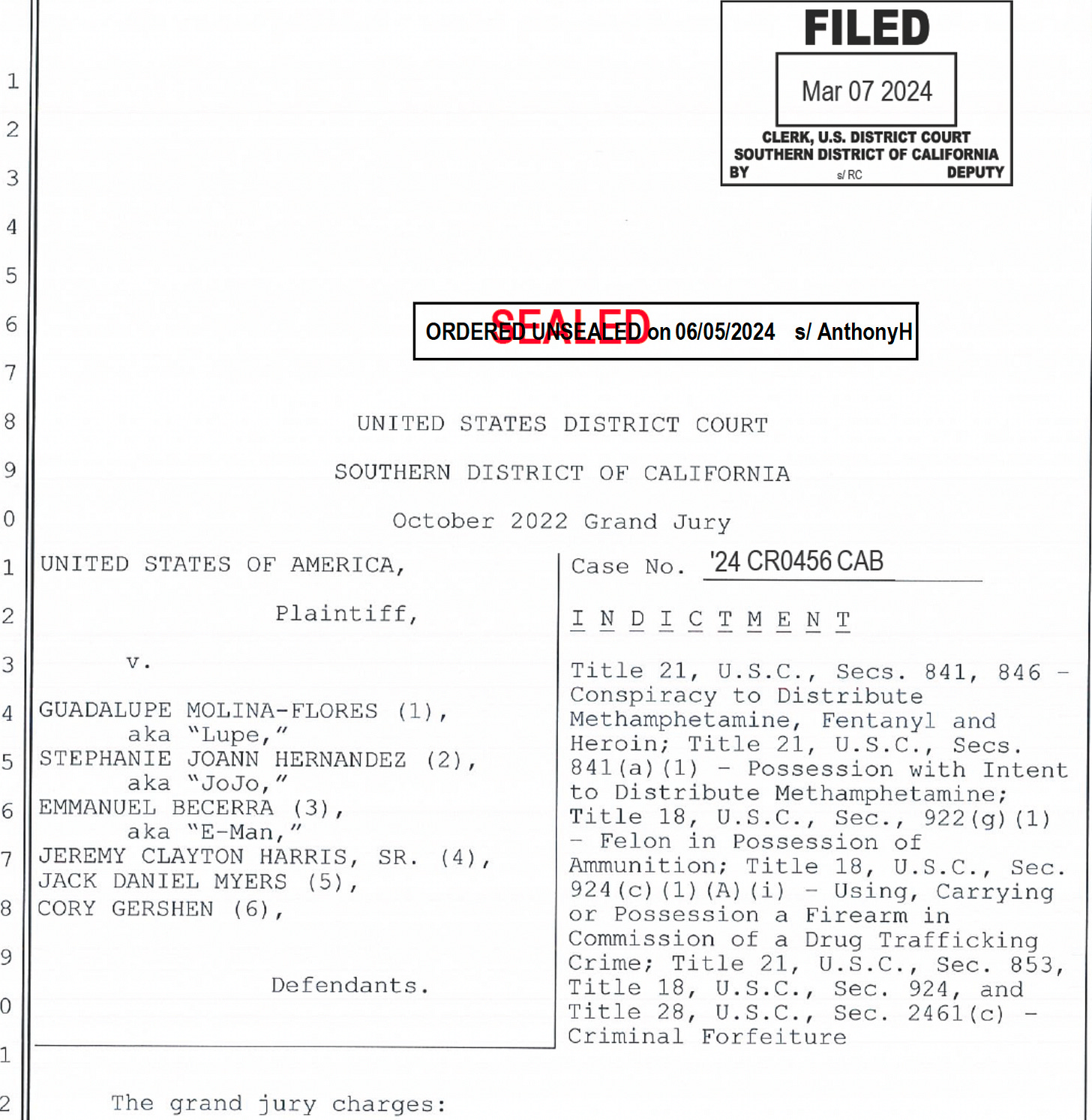California: The Drug Cartel Hub
The Sinaloa Mob loves the Golden State
Para leer en español click aquí.
At the crack of dawn on June 5, hundreds of federal agents hit houses across Southern California, hauling in suspects, pills, powder, and ghost guns. The targets were focused in Imperial Valley and the small towns and cities of El Centro, Brawley, Niland, Holtville and above all Calexico, over the border from Mexicali. But there were also suspects in San Diego and Los Angeles and connects as far afield as Arizona and Oregon. And the feds nabbed a Border Patrol agent alleged to be involved.
“They were responsible for smuggling, trafficking and distributing fentanyl, methamphetamines and firearms throughout our communities,” said Kevin Murphy, the agent in charge with Homeland Security Investigations (HSI) - which led the op involving 25 agencies.
The sting coincided with unveiling indictments against 47 suspects in the smuggling ring and followed a years-long investigation with phone taps. The traffickers were moving so much fentanyl, HSI claims, that the price they paid plummeted from about $1.70 a pill in 2021 to just 45 cents a pill by this May - right as overdose deaths have ravaged the United States. The crew’s source, HSI says, was the Sinaloa Cartel.
South of the California border, the Mexican city of Mexicali has long been a trafficking corridor for the Sinaloa mob. But while the cartel used to move heinous amounts of weed over this section, it has recently shifted to synthetics, especially meth and fentanyl, hidden in vehicles or in body cavities and smuggled through official crossings. Competing Sinaloa factions fight for the area including a crew called Los Rusos and gangsters loyal to Los Chapitos (the sons of El Chapo). The California traffickers who brought their dope appeared to be funneling rifles back to them.
The Imperial Valley crew is just one of many trafficking cells in Southern California that move dope from Mexico. SoCal is a well-established hub; narcos shift high volumes of drugs into it and then the product is distributed across the whole Western United States and many cities beyond. Cartels also use California to launder money via everything from wiring ops to clothes stores to record labels. Overall, the Golden State is key to state-side cartel operations, especially of the Sinaloa Cartel.
Traffickers try and keep the bloodshed south of the border as they don’t want to bring heat on their U.S. business side worth billions of dollars. But there have been several suspicious murders of cartel affiliates in SoCal recently.
In November, a killer in Willowbrook, Los Angeles, shot dead Eduardo Escobedo, a convicted drug distributor who was known as “El Mago” and had worked for the Chapitos. In February, a shooter in San Diego murdered Christian Espinoza Silver as he pulled into a parking garage near Westfield mall. Known as “El Chato,” Espinoza was reported to work for a prominent gangster in Tijuana, and according to Borderland Beat was dating the ex of the head Chapito (Iván Guzmán). Another two San Diego shootings in March could also be cartel linked.
The mob activity in California highlights how the struggle against cartels has to be waged in the United States where they operate widely and not just in Mexico which has suffered so much from the violence. It also raises concerns about how cartels could expand and entrench themselves inside U.S. states…
Subscribe for just $5 to read the full story and become part of the CrashOut Community with access to exclusive interviews, maps of cartel territory and to support important investigations.




